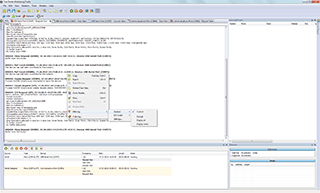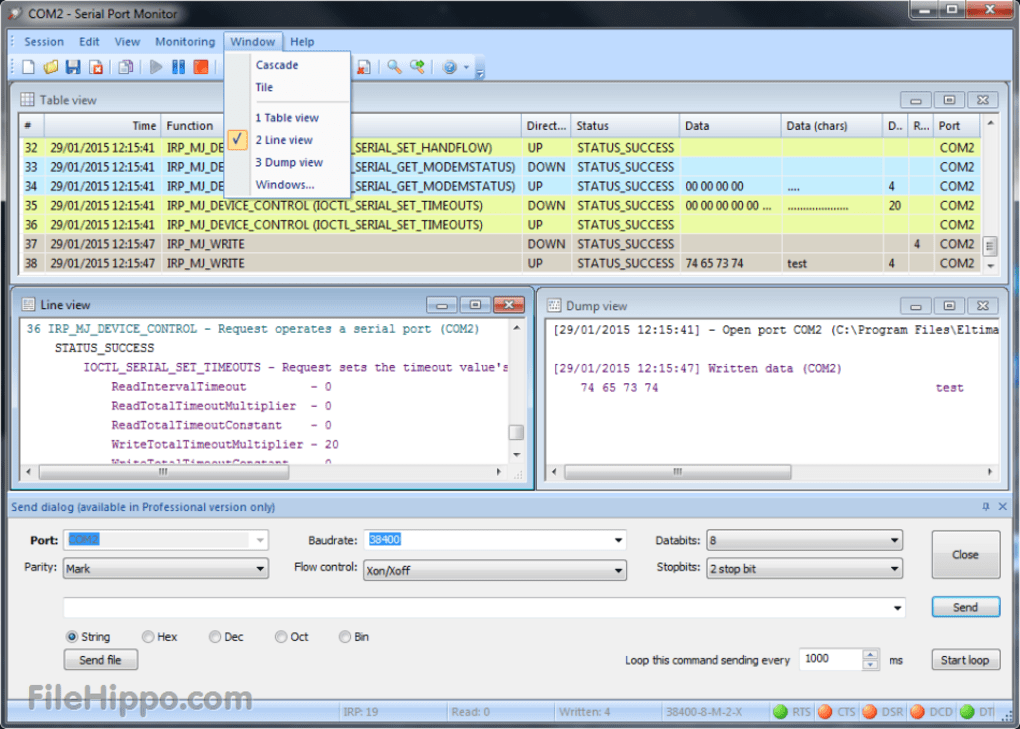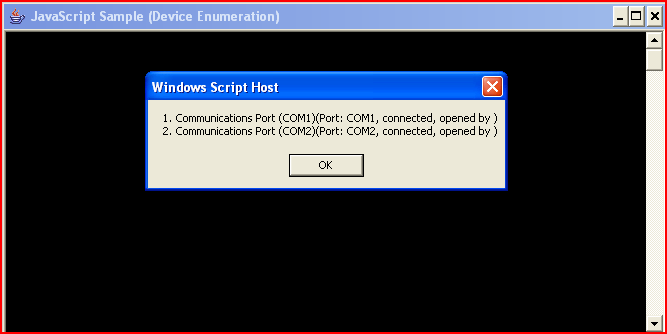

Devices are divided into two categories: data terminal equipment (DTE) and data circuit-terminating equipment (DCE).
#SERIAL PORT MONITOR SOFTWARE SERIAL#
The individual signals on a serial port are unidirectional and when connecting two devices, the outputs of one device must be connected to the inputs of the other.

As PCs evolved serial ports were included in the Super I/O chip and then in the chipset. These early home computers often had proprietary serial ports with pinouts and voltage levels incompatible with RS-232.īefore large-scale integration (LSI) made UARTs common, serial ports were commonly used in mainframes and minicomputers, which would have multiple small-scale integrated circuits to implement shift registers, logic gates, counters, and all the other logic needed. Very low-cost systems, such as some early home computers, would instead use the CPU to send the data through an output pin, using the bit banging technique.
#SERIAL PORT MONITOR SOFTWARE PC#
The IBM PC implements its serial ports, when present, with one or more UARTs. This IC converts characters to and from asynchronous serial form, implementing the timing and framing of data specified by the serial protocol in hardware. Modern devices use an integrated circuit called a UART to implement a serial port. ( November 2021) ( Learn how and when to remove this template message) Unsourced material may be challenged and removed.

Please help improve this article by adding citations to reliable sources. This section needs additional citations for verification. To interface with these and other devices, USB-to-serial converters can quickly and easily add a serial port to a modern PC. Server computers may use a serial port as a control console for diagnostics, while networking hardware (such as routers and switches) commonly use serial console ports for configuration, diagnostics, and emergency maintenance access. However, serial ports are still frequently used in applications demanding simple, low-speed interfaces, such as industrial automation systems, scientific instruments, point of sale systems and some industrial and consumer products. Modern consumer personal computers (PCs) have largely replaced serial ports with higher-speed standards, primarily USB. While interfaces such as Ethernet, FireWire, and USB also send data as a serial stream, the term serial port usually denotes hardware compliant with RS-232 or a related standard, such as RS-485 or RS-422. Throughout most of the history of personal computers, data has been transferred through serial ports to devices such as modems, terminals, various peripherals, and directly between computers. This is in contrast to a parallel port, which communicates multiple bits simultaneously in parallel. In computing, a serial port is a serial communication interface through which information transfers in or out sequentially one bit at a time. A male D-subminiature connector used for a serial port on an IBM PC compatible computer along with the serial port symbol


 0 kommentar(er)
0 kommentar(er)
